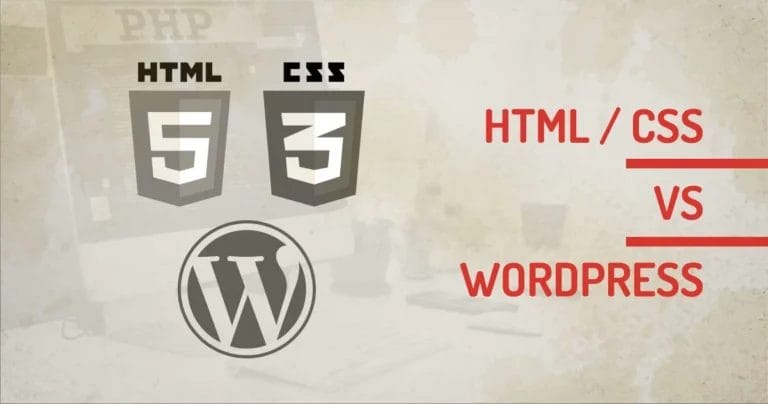A secure website is essential for any business in today's digital world. WordPress is one of the most popular content management systems for creating websites, but it can also be vulnerable to malicious attacks and disasters. The most successful websites balance security with convenience and ease of use, but unfortunately, disasters can occur which can lead to loss of data, costly downtime, and even reputational damage. Fortunately, there are several steps you can take to secure your WordPress website from disaster and ensure recovery if an attack does occur.
This article will discuss the different methods you can use to protect your site from cyberattacks and recover quickly in an emergency.
Types Of Website Disasters
Website disasters can happen to anyone at any time, but the right preparation can make all the difference. Understanding the types of website disasters that can occur is the first step towards securing your site from potential harm.
Hardware Failures
 Hardware failures can be catastrophic for websites, and it's important to know what types of website disasters can occur as a result. There are several different ways hardware failures can impact your website, each with its own set of symptoms and consequences.
Hardware failures can be catastrophic for websites, and it's important to know what types of website disasters can occur as a result. There are several different ways hardware failures can impact your website, each with its own set of symptoms and consequences.
One type of website disaster caused by hardware failure is server downtime. When the server hosting your website experiences hardware problems, it may become unavailable to users. This can lead to lost customers, decreased sales, and damage to your reputation. In addition, some search engines may penalize sites that frequently experience downtime or other issues related to server availability.
Another type of disaster resulting from hardware failure is data loss. If a hard drive or other storage device fails, you could lose all the data stored on that device - including your entire website! This can be devastating for businesses that rely on their online presence for sales or customer engagement.
Software Failures
 When it comes to website disasters, software failures rank among the most common and destructive types. Whether it's a bug in the code or an issue with a third-party tool or plugin, there are many ways in which software can cause your website to go offline, lose data, or behave erratically.
When it comes to website disasters, software failures rank among the most common and destructive types. Whether it's a bug in the code or an issue with a third-party tool or plugin, there are many ways in which software can cause your website to go offline, lose data, or behave erratically.
One common type of software failure is a database crash. Databases are an essential component of most websites and contain everything from user account information to product catalogs. If a database crashes due to corrupted files, hardware issues, or another problem, it can bring down your entire site until the issue is resolved.
Another type of software disaster that can create havoc on your website is security breaches. Malicious actors can exploit vulnerabilities in your site's code or plugins to gain unauthorized access to sensitive data like user information and payment details.
Human Errors
 One of the most significant causes of website disasters is human errors, which can have severe consequences if not addressed adequately.
One of the most significant causes of website disasters is human errors, which can have severe consequences if not addressed adequately.
Human errors may result from mistakes made by website administrators or developers during site design or maintenance processes. A common example is accidentally deleting critical files or data essential for a website's proper functioning. Such errors may lead to site crashes, resulting in loss of revenue and reputation damage for businesses.
Another potential disaster caused by human error includes website vulnerabilities that hackers exploit quickly. These vulnerabilities may arise when developers fail to update plugins or software regularly, leaving websites exposed to cyber threats. In such cases, hackers could gain access to sensitive information like customer data and financial records, leading to severe consequences for businesses and their customers alike.
Cyberattacks
 Cyberattacks can occur at any time and can have devastating consequences for a website's functionality, security, and reputation. There are several types of cyberattacks that websites may encounter.
Cyberattacks can occur at any time and can have devastating consequences for a website's functionality, security, and reputation. There are several types of cyberattacks that websites may encounter.
One common type is a DDoS attack (distributed denial-of-service), where an attacker floods a website with traffic to overwhelm its servers and make it inaccessible to users. Another type is a SQL injection attack, where an attacker exploits vulnerabilities in a website's code to gain unauthorized access to its database. Malware attacks are also common, where malicious software infects a website and steals sensitive information from users or damages the site's functionality.
Pre-Disaster Steps To Be Taken
 Taking proactive measures before disaster strikes on your WordPress website can help mitigate the damage and ensure that your site remains up and running.
Taking proactive measures before disaster strikes on your WordPress website can help mitigate the damage and ensure that your site remains up and running.
-
The first step in disaster preparation is to back up your website regularly. This means creating a copy of all your site files, including images, videos, posts, pages, themes, and plugins. Regular backups will allow you to restore your site quickly in case of data loss or corruption.
-
Secondly, you should secure your website with updated security protocols. Install a reliable security plugin that can scan for vulnerabilities or suspicious activity on your website. Additionally, make sure all passwords are strong and unique to prevent unauthorized access.
-
Finally, create an emergency plan that outlines steps to take if something goes wrong with your website.
Post-Disaster Steps To Be Taken
In the aftermath of a disaster, such as natural calamities or cyber-attacks, businesses must prioritize their website's recovery.
-
It is important to assess the damage done to your website. This could include identifying missing files, broken links, or hacked pages.
-
Once you have identified the issues that need addressing, create a backup of your website before making any changes. This ensures that if something goes wrong during restoration efforts, you will still have access to an earlier version of your site.
-
Set up security measures that prevent future disasters from happening. Install firewalls and malware scanners that can detect potential threats and keep hackers at bay. It is also advisable to keep all plugins and software updated regularly with the latest versions available.
-
Communicate with your audience as soon as possible. This will help to alleviate their concerns by letting them know that you are aware of the situation and working towards fixing it.
Best Practices For Website Disaster Recovery

Regularly testing your backups ensures that they are working correctly and are available when you need them most. It's important to note that simply having a backup does not guarantee successful recovery in the event of a disaster. By routinely testing your backups, you can identify any issues or gaps in the process early on and make necessary adjustments before an actual emergency.
Having multiple backup copies of your website is essential. These backups should be stored in different locations - both physically and virtually. Physical backups can include external hard drives or USBs that are kept offsite in case of a physical disaster at the main location. Virtual backups can be cloud-based solutions that provide remote access to your data.
Keep an inventory of all software and hardware used on your website. This inventory should include all the physical components that make up your web server infrastructure as well as the software applications that are installed on them. This inventory will help you determine which components or applications are critical to your website's functionality and which ones can be replaced or upgraded if necessary.
Assign specific roles and responsibilities for disaster recovery. Your disaster recovery plan should include clear guidelines for who will be responsible for what during an emergency. It's also vital that each member of your team understands their role in executing the disaster recovery plan.
Conduct regular disaster recovery drills. Regular drills simulate real-life scenarios and test your team's ability to respond effectively. They identify gaps in your recovery plan and help you refine it accordingly. By conducting these tests, you can ensure that everyone involved knows their role and responsibilities during an actual disaster.
Final Take
Securing and recovering your WordPress website from disaster is essential for any business or individual. Taking the necessary steps to protect your website and data can save you a lot of time, money, and stress in the long run. Developing a plan that includes security measures, backups, and recovery procedures will help you stay on top of any potential threats and ensure that your site is always operating at its best. Also, don’t forget to test all security measures and recovery processes regularly. Finally, invest in a reliable protection system to keep your website safe against various security threats.




